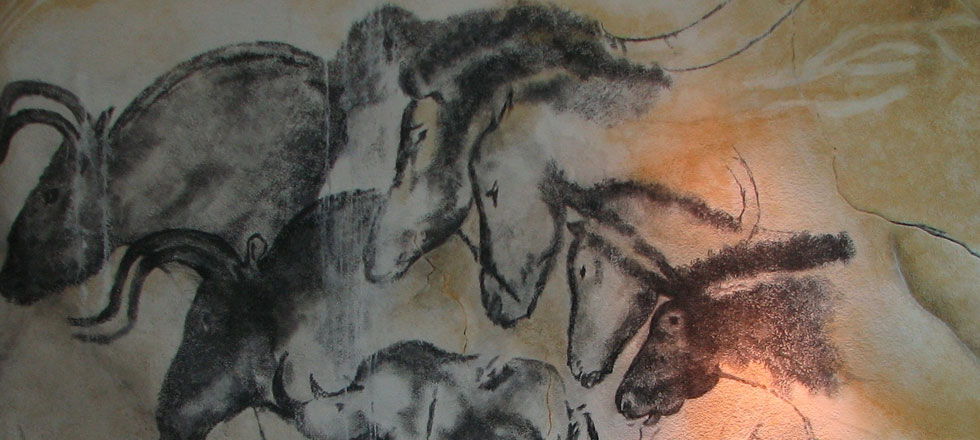At www.pasthorizonspr.com/index.php/archives/05/2014/new-battle-for-the-dat… … another twist in the dating dispute over the paintings found in Chauvet cave in southern France. On one side the traditionalists, where it is supposed Palaeolithic art developed from crude to sophisticated, and it is possible to date the paintings simply by the style. They have had their nose out of joint recently as C14 dating has suggested the paintings may be somewhat older – a date of 40,000BC has even been suggested. However, the traditionalists have bitten back and have produced evidence they think will show the paintings were drawn between 26,000 and 18,000 years ago. The latter date is associated with the end of the Late Glacial Maximum (some kind of event occurred, marked by the Oldest Dryas Event). The paradox here is that there are 425 groups of paintings in the cave system which include realistic renditions of reindeer, horses, auroch, rhinoceros, lions, bison and cave bears, a mixed assembly of animals,
 The big problem here is that we are talking about the Late Glacial Maximum when the Alps are supposed to have been under huge glaciers (just down the road from Chauvet, in the Rhone valley). How can so many animals have thrived virtually on the cusp of the ice sheets.
The big problem here is that we are talking about the Late Glacial Maximum when the Alps are supposed to have been under huge glaciers (just down the road from Chauvet, in the Rhone valley). How can so many animals have thrived virtually on the cusp of the ice sheets.
The other side date the paintings to around 30,000 years ago – and possibly even earlier. It is not clear how cold it was at this time as warm periods (Dansgaard-Oeschger events) litter the whole range of the last Ice Age. Another problem is that we have a massive C14 plateau between 40 and 30,000 years ago that appears to mark some major event (in which many animals died across the world) – and there was probably another plateau corresponding with the Oldes Dryas event too. Hence, it was found impossible to use C14 from beyond this time as the process gave contradictory results and is regarded as unreliable – although some recent attempts have tried to go round the plateau.
There is something else to bear in mind. What if glacial drift (gravels, erratics, boulder clays) is derived as much from water as from ice? This would have a tendency to reduce the geographical limits of the Late Glacial Maximum and perhaps the climate was not as unfavourable to large mammals as would appear to be the case if the ice sheets really were as big as they are claimed to be.
